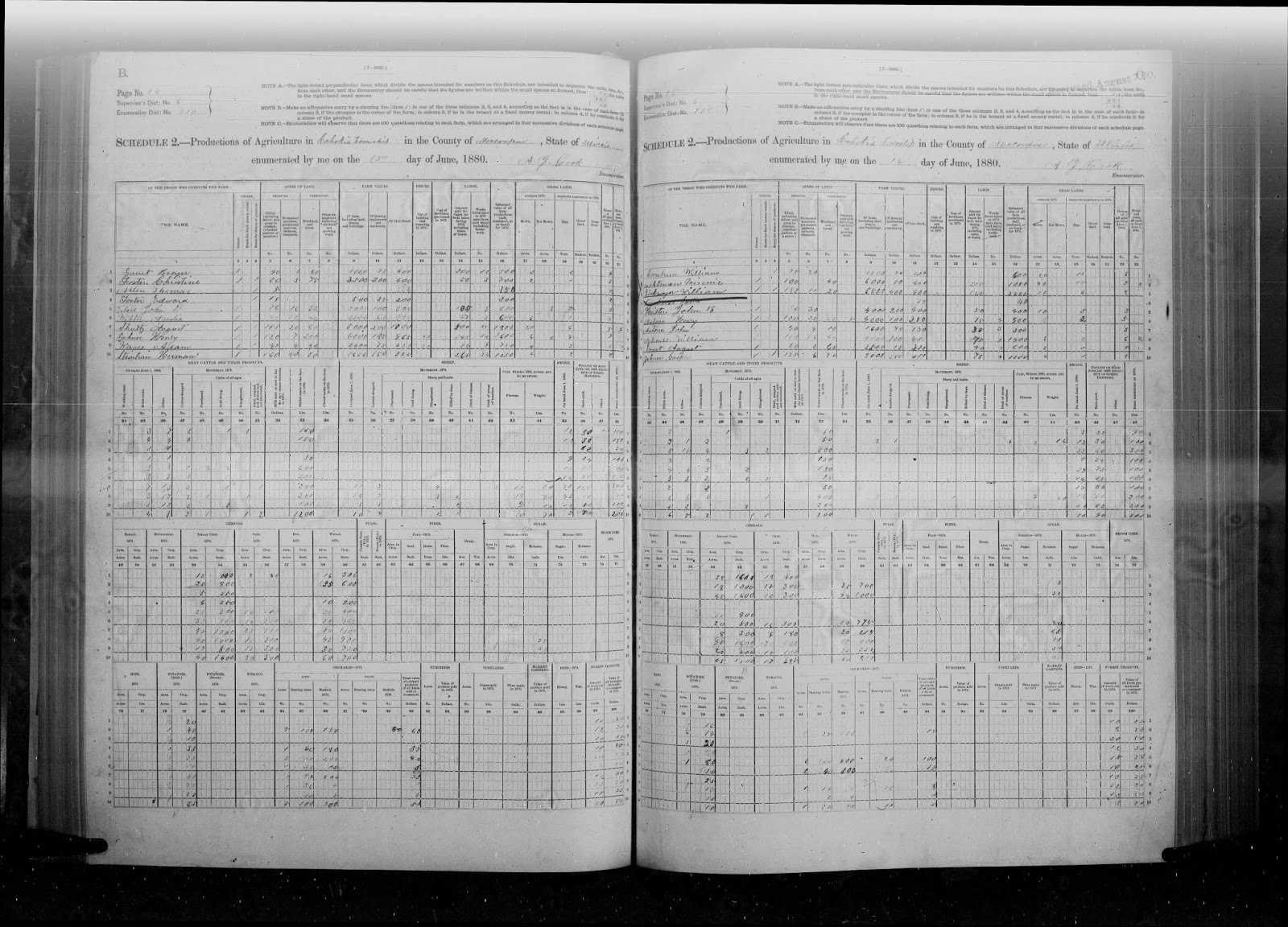As we walked through my side, we got him straightened out on his English-Norwegian-Danish-French background, with small traces of Welsh and Irish thrown in for good measure. Then Henry turned to his mom and asked "Mom, what are you again?"
Mom's answer- like it has been going back to elementary school- "mostly German, but 1/8th Polish."
As I got the youngest to bed that night, I started thinking about the Polish part of the family. Throughout his life, Grandpa Geidel talked about his mother being Polish. With a name like Olawsky, it definitely at first sounds like this would be the case.
But I got to wondering, why did a bunch of Polish people end up settling in the middle of bunch of Germans, including marrying into other families and being buried in a German Lutheran church cemetery?
It was time to see what we could find out about how Polish the family was in the records.
Census Records
First up, the 1920 Census records on Familysearch.org. Carl and Susanna Olawsky appear right where they should- Washington Township, Douglas County, South Dakota. The only problem- their birthplace and that of their parents is given as Germany.
Let's see what they said ten years earlier in the 1910 Census. Germany as place of birth for both Carl and "Susie" Olawsky - their parents also were born in Germany.
South Dakota's state censuses in 1905, 1915, 1925? German, German and German.
Something funny is going on here. Was Grandpa wrong? Time to dig deeper. On both Federal Censuses, Carl and Susanna reported they had immigrated to the US in 1886.
Immigration Records
The National Archives has compiled an index of Germans immigrating to America from 1850 to 1897, again available from FamilySearch.org. Searching for Olawskys immigrating in 1886 gives two results:
| Name | Karl Olawsky | Suzanne Olawsky |
|---|---|---|
Age
|
25 | 20 |
Occupation
|
Laborer | Wife |
Birthplace
|
Prussia | Prussia |
Immigration Date
|
25 Sept 1886 | |
Place
|
New York, New York | |
Ship
|
Hammonia (in case you want to see the ship and some info) | |
Departed from
|
Hamburg and Havre | |
Emigration Records
On the other side of the Atlantic, the Olawsky's gave a little more information when they got on the Hammonia in Hamburg. The Hamburg emigration records are available through Ancestry.com. The originals are really hard to read given the handwriting of the port official, but they've transcribed it to make this somewhat legible.
| "Zuname" | Vorname | Gender | Age | Bisheriger Wohnort (Previous place of residence) | Im Staate oder in der Provinz (In the State or province) |
|---|---|---|---|---|---|
| Olawsky | Karl | Male | 25 | Gruntanne | Schlesien |
| Olawsky | Susanne | Female | 20 | Gruntanne | Schlesien |
We get a couple of interesting tidbits here.
1. we have a hometown- Gruntanne, Silesia.
2. we may have a travelling companion or two. Right above the Olawskys are two more people from Gruntanne. Daniel (age 45) and Rosina Singmann (age 60). They got on the boat in Hamburg together (Singmanns first) and they got off the boat in the same order in New York. Unfortunately, I haven't found anything more yet on these two except the fact they emigrated from Hamburg, arriving in New York. From there, they just disappear.
Gruntanne
Gruntanne was part of the larger town of Peisterwitz and was part of Prussia from the early 1800's, so it was definitely was German territory. But Silesia is a complex region, even as late as the German 1905 Census, some 25% of the entire population (and over half of those listing east of the Oder River) usually spoke Polish or Silesian.
After the German expulsion from Silesia after WWII, the area was re-settled by ethnic Poles and is now part of Poland. Places were renamed and Peisterwitz was renamed Bystrzyca.







